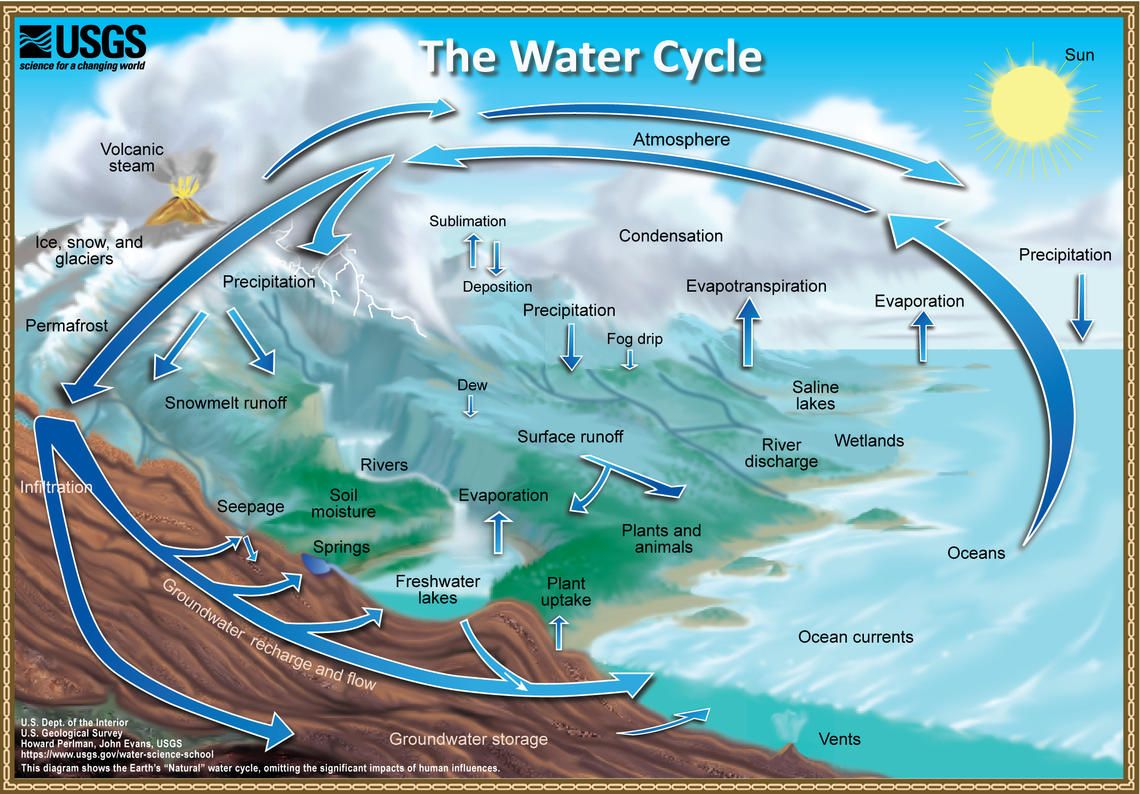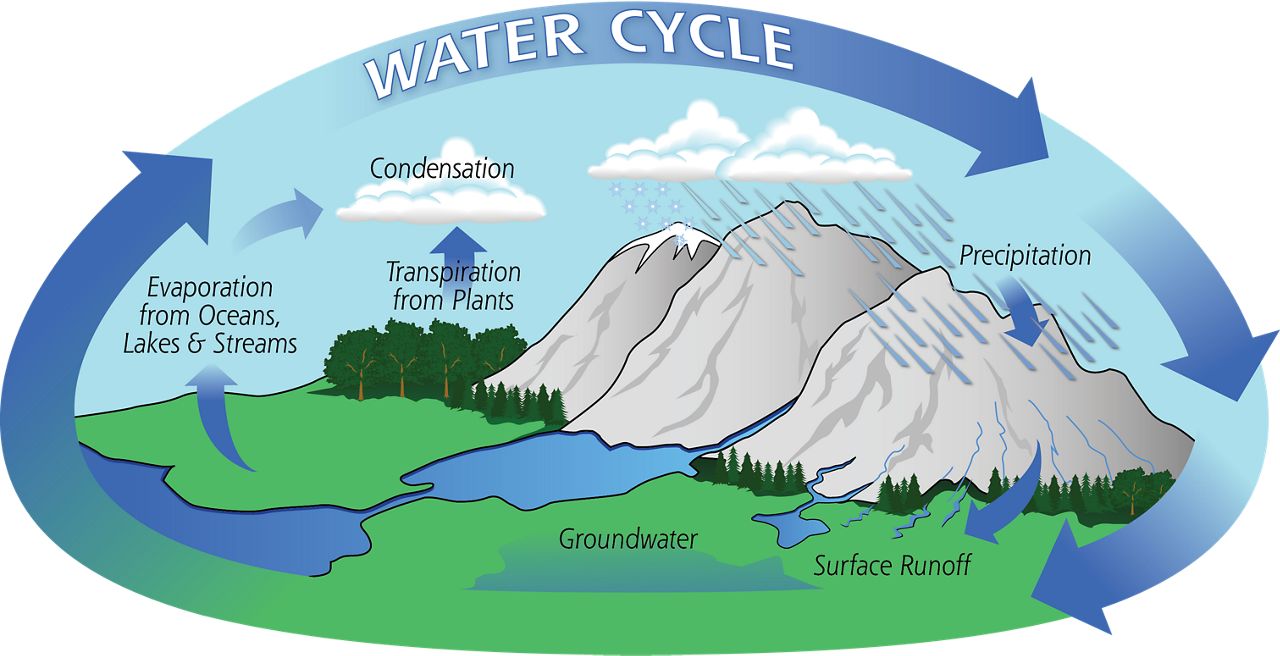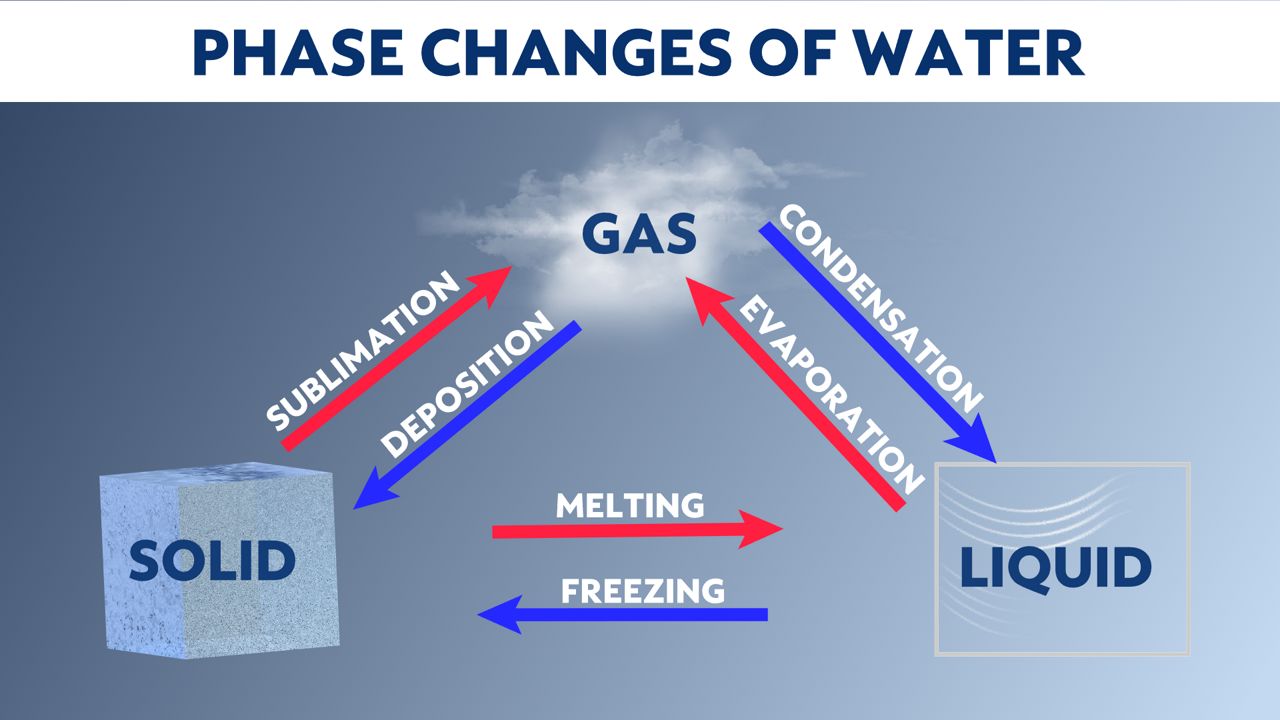Did you know that the total amount of water on Earth is fixed? The amount of water is neither gained nor lost between the Earth and its atmosphere.
Water is a compound of two elements, hydrogen and oxygen. One molecule of water consists of two hydrogen atoms and one oxygen atom. It goes through six phase changes as it moves through the water cycle.
These phase changes are condensation and evaporation, freezing and melting, and deposition and sublimation.
Water can exist as a liquid, solid and gas as it moves through the water cycle. At its most basic level, liquid water is stored in oceans, rivers and lakes.
When heat energy is added (mostly by the sun), water is transitioned into its gaseous state. This is known as water vapor. Water vapor in the atmosphere remains a gas until it is cooled enough and becomes water droplets, forming clouds. This phase change is called condensation.
If the temperature is cold enough, water vapor goes directly to ice crystals. This phase change is called deposition. High clouds known as cirrus clouds are formed by this process. Snow is also formed by this process, which is called the Bergeron Process.
The process of collision-coalescence happens when cloud droplets collide with each other to form bigger cloud droplets. Eventually, the drops become so big or heavy that gravity can no longer keep them suspended in the cloud. As a result, they fall to the ground as raindrops.

When rainwater hits the ground, it will flow back into the oceans, lakes or rivers where it originated. However, it may also be absorbed into the ground, moving into aquifers or becoming groundwater.
Similarly, when snowflakes fall to the ground, they may become part of the winter snowpack and eventually melt and flow into streams and rivers that flow into lakes and eventually back into the ocean.
At this point, the process starts all over again.
However, if the snowflake lands on a glacier, it could be stored for hundreds of thousands of years.
Given that the Earth is currently going through a warming period, thousand-year-old snow that has been locked up in polar continues to melt.
The bottom line is that the amount of water on the Earth and in its atmosphere remains constant as it goes through the water cycle. The graphic below is a very basic illustration of water as it moves through the water cycle.

Courtesy: NASA

